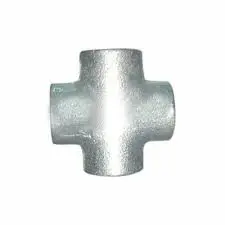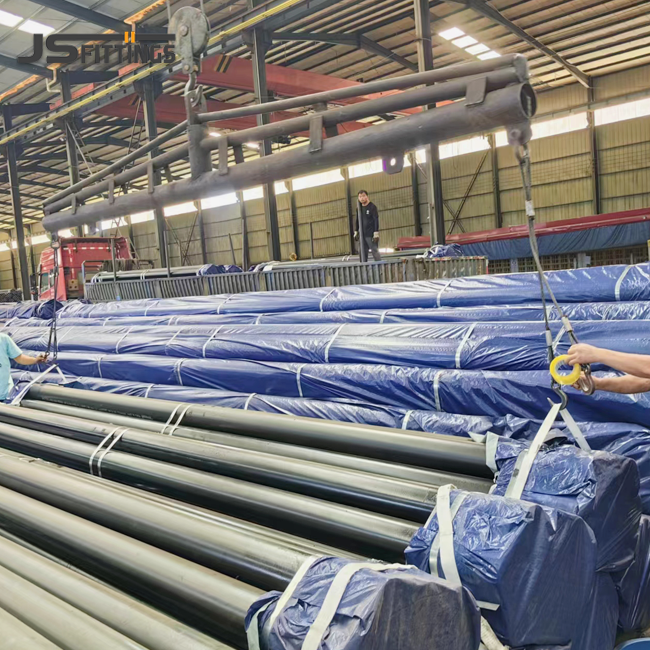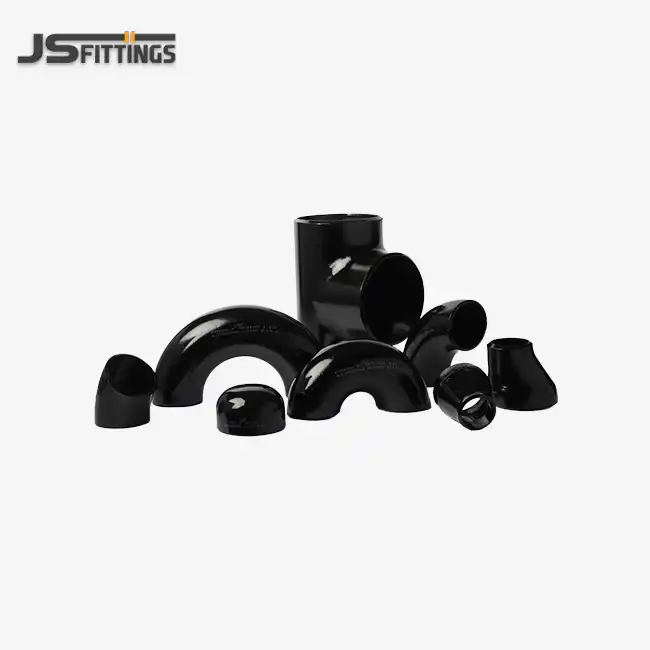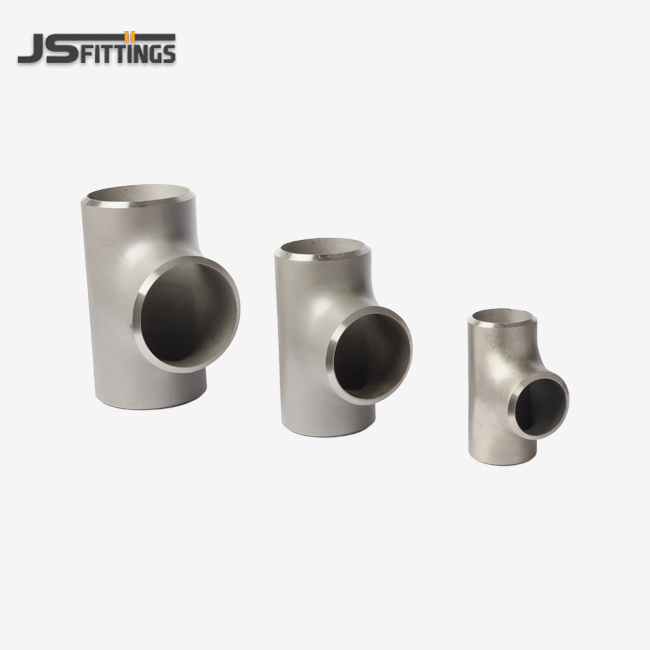What are the key preparation steps before installing a pipe equal cross-section?
Before diving into the installation process, thorough preparation is essential to ensure a smooth and successful outcome. Here are the critical steps to take:
Site Assessment and Planning
Begin by carefully assessing the installation site. Consider factors such as accessibility, surrounding structures, and potential obstacles.Make a thorough plan that shows exactly where the pipe equal cross is in your water system. This step is very important for making sure that the flow is spread out evenly and that problems don't happen later.
Gathering Necessary Tools and Materials
Get all of the tools and materials you'll need before you start the work. In most cases, this includes:
- The pipe has an equal cross fitting
- Pipe pieces that can be connected to the cross
- Tools for welding (for butt-weld fits)
- A pipe tool or a saw
- Tools for measuring
- Safety gear (gloves, masks, and protective clothing)
- Things for cleaning
Make sure the pipe equal cross and linking lines are the right size, grade, and material for the job. Fittings that are up to standards like ASME B16.9 or EN 10253 must be used to make sure the system works well and lasts a long time.
Pipe Preparation and Alignment
For a work to go well, the pipes must be properly prepared. Do these things:
- Get rid of any dirt, rust, or other junk on the pipe ends by cleaning them really well.
- Make sure the cuts are smooth and straight when you cut the pipes to the right length.
- Make sure that the pipe ends are at an angle, the way the welding instructions say to be when you use butt-weld joints.
- Make sure all of the pipes are straight and level before you put them in order.
- Hold the pipes in place while they are being put in with temporary blocks or clamps.
Making sure the pipes are lined up right is very important so that the joints don't get stressed and the pipe's cross-sectional cross flows properly.
Welding or joining methods for butt-weld equal cross installation
How you connect the pipe equal cross to the connecting lines depends on the type of fitting you have and how your water system is set up. Welding is the main way that butt-weld squares are put together. Here is a thorough look at how welding works and some other ways to join things:
Butt Welding Process
In industrial settings, butt welding is the most common way to put in pipe equal crosses. You can make a strong part that doesn't have any holes and can handle high temperatures and pressures with this method. To do butt welding right, follow these steps:
- The pipe's equal cross-section and the curved ends of the pipes should be cleaned very well.
- Make sure the fitting and lines are perfectly lined up, leaving enough space between the roots.
- Tack weld the parts in place to keep them in place.
- Go around and around until the metal is the right thickness.
- The metal won't bend or stretch if you let it cool down slowly.
Welders who are skilled and know how to do their jobs are needed to get good welds that meet project needs and industry standards.
Alternative Joining Methods
Butt welding is the best way to join metal parts in many industrial situations, but other methods, like pipe equal cross, may work in some cases:
- Flanged Connections: Flanged pipe equal crosses can be used when parts need to be taken apart often or when welding is not an option. These are linked together with nuts and gaskets, which makes for a good seal and easy entry for upkeep.
- Threaded Connections: Threaded pipe equal crosses may work in systems with smaller diameters or low pressure. For links that don't leak, you need to use the right thread sealer and tighten them carefully.
- You can use curved connections to connect the cross-fitting to the pipes so that the system can be set up quickly and in a variety of ways. This method works especially well for retrofitting projects or other uses that need to isolate vibrations.
No matter what method is used to join, all connections must be made according to the manufacturer's instructions and industry standards to make sure the system works properly and is complete.
Pressure testing and final inspection after installing the cross-fitting
After installing the pipe equal cross and completing all connections, it's crucial to conduct thorough testing and inspection to ensure the integrity and safety of your plumbing network. This final phase is critical for identifying any potential issues before the system goes into operation.
Pressure Testing Procedures
Pressure testing is an important part of making sure that the placed pipe has an equal cross-section and its links are strong and won't leak. To do pressure tests right, follow these steps:
- Put a stopper on the part of the pipe system that has the new cross-fitting.
- Put in the right test medium, which is usually water for hydrostatic testing or air for compressor testing.
- The pressure will reach the test pressure, which is normally 1.5 times the system's design pressure, as you slowly raise it.
- Make sure the test pressure stays at the right level for the right amount of time. Usually, this is at least 10 minutes, but follow the rules for as long as they say.
- Check every joint for damage or leaks, even the ones that connect to the pipe equal cross.
- Notes and the values of the pressure should be written down along with the test findings.
It's also important to remember that pressure testing should be done in a way that meets state and business rules. Always follow the safety rules, especially when you check the gas.
Final Inspection Checklist
After pressure testing, perform a comprehensive final inspection to ensure the pipe equal cross installation meets all quality and safety requirements:
- Visual inspection of all welds or mechanical joints for defects or irregularities
- Verification of proper alignment and support of the cross-fitting and connected pipes
- Checking for any signs of stress or strain on the fitting or surrounding piping
- Confirmation that all temporary supports or clamps have been removed
- Checking any coats or padding that were put on the fitting and the pipes next to it
- Making sure that all the necessary marks and identification tags are in place
- Inspection of all papers, including test results, welding logs, and material certificates
Fixing any issues found during the study should happen quickly and fully before the system is used. In this case, more tests, repairs, or replacements may be needed to make sure the whole thing meets all project and safety standards.
System Flushing and Cleaning
Often, the pipe system needs to be flushed and cleaned before it can be fully put into use. This is done to get rid of any dirt or contaminants that were introduced during the building process. This is especially important for systems that deal with dangerous fluids or must be kept very clean. The process of cleaning usually includes:
- Making a flushing plan that lists the steps, cleaners, and requirements for acceptance
- Using the right cleaning product and moving it quickly through the system
- Using makeshift strainers to catch the dirt
- Fully draining and cleaning the system
- Performing a final check to make sure it is clean
These steps will help you make sure that your new pipe is equal cross and the pipes around it are ready to work safely and well. You should carefully check the pressure, inspect, and clean them. This all-around way lowers the risk of leaks, breaks, and speed issues. In the long run, this makes your water system safer and more reliable.
Conclusion
Installing a pipe equal cross in your water system is a big job that needs to be carefully planned, done right, and tried many times. If you follow this whole help, the job will be done right and safely. Remember that the best way to make a water system that works well is to use good parts, follow the rules for your business, and pay close attention to every little thing.
FAQ
1. What is the purpose of a pipe equal cross-section in plumbing systems?
A pipe equal cross is designed to connect four pipes at right angles, allowing for the distribution or combination of fluid flow in multiple directions. It's commonly used in complex piping networks to create branching points or to combine multiple flow streams.
2. How do I choose the right material for a pipe with equal cross-section?
The choice of material depends on factors such as the fluid being transported, operating temperature and pressure, and environmental conditions. Common materials include carbon steel, stainless steel, and alloy steel. Consult with a reputable manufacturer to select the most suitable material for your specific application.
3. What are the key standards governing pipe equal cross manufacturing?
Pipe equal crosses are typically manufactured in accordance with standards such as ASME B16.9 for butt-weld fittings, EN 10253 for European applications, or GOST standards for certain markets. These standards ensure consistency in dimensions, tolerances, and material properties.
4. How often should pipe equal crosses be inspected after installation?
The inspection frequency depends on the application, operating conditions, and regulatory requirements. Generally, it's recommended to include pipe equal crosses in regular system inspections, which may occur annually or more frequently in critical applications. Always follow industry-specific guidelines and local regulations for inspection schedules.
High-Quality Pipe Equal Cross Fittings for Industrial Applications | JS FITTINGS
Looking for reliable, high-performance pipe equal cross fittings for your industrial piping project? JS FITTINGS offers a comprehensive range of pipe fittings, including equal crosses, manufactured to the highest industry standards. Our products are designed to meet the demanding requirements of EPC contractors, distributors, and industrial end-users across various sectors.
Key benefits of choosing JS FITTINGS for your pipe equal cross needs:
- Be very careful to follow the rules in ASME B16.9, EN 10253, and GOST.
- It is made from steels such as carbon steel, stainless steel, metal steel, and so on.
- You can sand it, use anti-rust oil, or finish it in an eco-friendly way to clean it.
- If you ask, you can get custom shapes and fabrics.
- Everything we sell is approved by CE/PED 2014/68/EU, ISO 9001, and GOST-R.
- Approved by important players in the business, such as NIOC, ADNOC, and PETROBRAS
Don't compromise on quality when it comes to critical components like pipe equal crosses. Contact JS FITTINGS today at admin@chinajsgj.com to discuss your project requirements and discover how our expertise can contribute to the success and longevity of your piping systems.
References
1. American Society of Mechanical Engineers. (2017). ASME B16.9-2018: Factory-Made Wrought Buttwelding Fittings.
2. European Committee for Standardization. (2011). EN 10253: Butt-welding pipe fittings.
3. Nayyar, M. L. (2000). Piping Handbook (7th ed.). McGraw-Hill Education.
4. American Welding Society. (2015). AWS D10.4/D10.4M:2015 Guide for Welding Industrial and Mill Piping Systems.
5. Antaki, G. A. (2003). Piping and Pipeline Engineering: Design, Construction, Maintenance, Integrity, and Repair. CRC Press.
6. International Organization for Standardization. (2015). ISO 9001:2015 Quality management systems — Requirements.




_1758097857386.webp)